MUJERES SUPERVALIENTES VICTIMAS DEL NAZISMO
In the footsteps of the women who escaped a Nazi death march
By Lucy Wallis
BBC Stories
When Gwen Strauss' great-aunt revealed she had led a group of nine Resistance women in an escape from a Nazi death march in 1945, Gwen wanted to find out more. It set her on a path that would see her retrace the women's steps and ensure the bravery of their work was recognised over 75 years later.
Gwen Strauss was enjoying a leisurely lunch with her 83-year-old great-aunt, Hélène Podliasky.
Hélène was French and Gwen, an American author, lives in France.
It was 2002 and the conversation turned to Hélène's past. Gwen knew her great-aunt had worked in the Resistance in France during World War Two, but didn't know anything about that time in her life.
Hélène told the story of how she was captured by the Gestapo, tortured and deported to Germany to a concentration camp. As the allies drew near, the camp was evacuated and she was forced to walk for miles on a Nazi death march.
"Then I escaped with a group of women," she said briefly.
Gwen was astounded.
"It was nearing the end of her life, I think she felt ready to speak about it," says Gwen, "and as [with] many survivors who had kept silent for years, they often didn't speak to their immediate family, they would speak to someone a little bit distanced from the family."
Find out more
- Gwen Strauss spoke to presenter Emma Barnett for BBC Woman's Hour
- Listen again to the interview.
Hélène Podliasky was only 24 when she was arrested working as an agent de liaison for the Resistance in the north east of France. Her nom de guerre, or fake name, was Christine. Hélène spoke five languages including German, and was a highly qualified engineer.
"She was quite high up in the Resistance," says Gwen. "She had been working for over a year contacting agents and guiding parachute drops of material. She was brilliant. An elegant, quiet, but forceful person."
It was the final years of the war, and Hélène had been arrested in 1944 after a big push by the Nazis to try to break up all the Resistance networks in France. Also swept up in the arrests around this time were eight other women. Hélène's school friend was one of them.
Suzanne Maudet (nom de guerre: Zaza) was optimistic, kind and generous says Gwen. A month after she got married at the age of 22 to fellow Resistance member, René Maudet, the couple were arrested for helping young French men escape underground into the Resistance instead of being drafted to work in the German factories.
"Then there was Nicole Clarence, who was in charge of all the agents de liaison in the whole Paris region," says Gwen - which put her in immense danger. Aged just 22, she was arrested three weeks before the liberation of Paris in August 1944 and was deported on the last transport out of the city.
Jacqueline Aubéry du Boulley (Jacky) was also one of the last prisoners to be taken away from Paris. Aged 29, Jacky was the oldest in the group, a war widow and part of a key intelligence network in the Resistance, says Gwen. She had been raised by an aunt and uncle as her father was a seaman and away at sea.
"When he came home she moved in with him," says Gwen. "She was pretty salty that way. She kind of spoke like a sailor and she spoke her mind. She smoked all the time, she had a really deep gravelly voice. She was tough."
Gwen also describes her as incredibly loyal and caring.
Madelon Verstijnen (Lon) and Guillemette Daendels (Guigui) were 27 ad 23 when they were arrested. Good friends, they came from upper-class Dutch families says Gwen.
"They came to Paris to join the Dutch network, but were swept up immediately and arrested almost upon arrival," she says. "Guigui was an athletic, much more ethereal, serene person, whereas Lon was kind of an elbow in, 'I got to be in the middle of things,' kind of a person."
Gwen refers to Renée Lebon Châtenay (Zinka) as "incredibly brave". Described by Lon as a "little doll," Zinka was said to be short with blonde curls and a gap between her front teeth. She and her husband worked for a network that helped British airmen escape back to England.
Zinka was arrested at the age of 29 says Gwen, and had a baby in prison who she named France. She was only allowed to keep her baby for 18 days before she was taken away and Zinka was deported to Germany. Zinka always said she had to survive for her daughter.
Then there was Yvonne Le Guillou (Mena). Gwen describes her as a working class girl who "loved to be in love". She worked with the Dutch networks in Paris and had fallen for a Dutch boy at the time. She was arrested at the age of 22.
The youngest of the nine was Joséphine Bordanava (Josée), who was just 20 when she was arrested in Marseille. She was Spanish, says Gwen, and had the most beautiful singing voice.
Josée, she says, would calm and soothe the children by singing to them.
The nine were all transferred to Ravensbrück, a concentration camp for women in northern Germany, and then sent to work in a labour camp in Leipzig making armaments. It was here where they forged a strong friendship.
The conditions in the camp were horrific. They were starved, tortured, stripped naked and forced to stand in the icy snow for inspections.
They survived by creating a network of friendship. In the camp they had a tradition, says Gwen, which would involve passing around a bowl of solidarity and everyone would put in a spoonful of their soup. They would then give the bowl to the woman who needed it the most that day.
The hunger was painful, but the women found talking about food reassuring says Gwen. Every night Nicole would recite her recipes of chestnut cream or a bavarois with strawberries soaked in kirsch. She would write these down on scraps of paper they had managed to steal from the office and Nicole made it into a recipe book with part of her mattress forming the cover.
When Gwen recorded Hélène's full account of what happened she says her great-aunt had wanted her to know that even though they were incarcerated, they were still soldiers, and the women worked together sabotaging the making of the shells for a weapon called the panzerfaust.
In April 1945 the allies had bombarded the factory so many times and the Nazis decided to evacuate the camp says Gwen, leading 5,000 starving, exhausted women in thin clothes and with bleeding and blistered feet, east across the German countryside.
Gwen says the women realised how dangerous this march was.
"They really knew that they had one choice," says Gwen, "they had to either escape or they would be killed or die starving. So they found a moment when there was a kind of chaos and they jumped into a ditch and pretended that they were a pile of corpses. There had been so many piles of corpses that that worked and the march continued without them."
Over the next 10 days, the women set off to find the American soldiers on the front line. Jacky had diphtheria, says Gwen, Zinka had tuberculosis, Nicole was recovering from pneumonia, Hélène had chronic hip pain. They had broken bones and were starving, but they were determined to find freedom together.
It took a lot of detective work and three trips to Germany to discover the exact route that the women took. What struck Gwen, retracing the women's steps, was how little progress they made each day.
"They only go five or 6kms sometimes," says Gwen.
"The irony is they're starving so they need food and they need some place to sleep safely, so they need to go to villages and talk to people, but every time they go to a village, that's the most dangerous time for them," says Gwen, "because they could walk in to a trap or be killed by the villagers."
Hélène and Lon, who both spoke German, would always go on ahead to ask permission from the head of the village to sleep in a barn, or spare any food.
"They decide pretty soon that the best strategy was to act as if there's nothing wrong with them being there, just to pretend like everything is fine and they're not scared," says Gwen.
When they realise the Americans on the front line are the other side of the Mulde river in Saxony, Germany, it is the final hurdle to cross.
"For me the most poignant was to stand at the bridge at the Mulde and look at the river," says Gwen. She had found information about the women from their military archives, from some of the women's own written accounts of their escape, from filmmakers who had researched Lon's story and by talking to the women's families.
She had discovered that crossing the river was one of the most harrowing moments for the women during the escape.
Having made it to the other side, there was a moment when some of the women feared they couldn't go on. Jacky was struggling to breathe, but the women were determined no-one would be left behind. Just then a Jeep roared up towards them and two American soldiers jumped out, offering them safety and a cigarette.
During her research Gwen says she discovered how difficult it was for the women to return to normal life after the war.
"They looked gaunt and terrible, and there was a kind of a shame around being a woman that was in a camp and… a kind of loneliness too," says Gwen.
"They were so close as a group and suddenly they're dispersed with people they can't talk to, people that don't want to hear it. So I think it must have been really psychologically isolating. I think it's like PTSD (Post Traumatic Stress Disorder), but unrecognised, because they [were] not considered soldiers."
As young women, they were often told after the war to keep their stories quiet, so their heroism went unrecognised, says Gwen.
"Out of the 1,038 Compagnons de la Libération, which was the group that [President Charles de Gaulle] considered the leaders of the Resistance, there were six women, and four of them were already dead," says Gwen. "So that's laughable, because the Resistance was probably at least 50% women."
Some of the women decided to cut off from the past says Gwen and move on, but others such as Guigui and Mena stayed friends for life and were godmothers to each other's children.
"The women did come together quite late again, around the time that my aunt told me the story, they had a bit of a reunion, the surviving group," says Gwen.
But what happened to Zinka's baby, France?
Gwen says she had been looking for her for about three years. "By weird coincidence I did actually find her and when I went to see her she lives not that far from where I live in southern France," says Gwen. "She said, 'Well imagine me after 70 years to learn all this about my mother."
France had been reunited with her mother after the war, but Zinka was very ill and had to have multiple operations because of the tuberculosis she had contracted in the camp. Zinka was sometimes too weak to look after her daughter when she was growing up, says Gwen, and she would often be sent to live with other members of the family.
Zinka died in 1978, but France did not know about the story of her mother's escape. "She didn't know how important she had been to her mother," says Gwen, "and to her mother's survival."
Great-aunt Hélène passed away in 2012. Towards the end of her life there were moments when it was clear Hélène was still haunted by the past, says Gwen, in a book she has written.
"Women bear the brunt of wars in ways that were unacknowledged, profound ways, and I want that to be recognised and known," says Gwen.
Yet Gwen also wants the "amazing acts of kindness and generosity" to be acknowledged too. "All of these little ways they held each other up are so beautiful, I think they should be celebrated as well."
Gwen has written a book about her great-aunt's story called The Nine.
Picture credits: Hélène Podliasky: Courtesy of Martine Fourcaut; Suzanne Maudet (Zaza): Courtesy of her family; Nicole Clarence: Droits Réservés; Jacqueline Aubéry du Boulley (Jacky): Courtesy of Michel Lévy; Madelon Verstijnen(Lon): Courtesy of Patricia Elisabeth Frédérique Wensink and Wladimir Schreiber; Renée Lebon Châtenay (Zinka): Courtesy of France Lebon Châtenay Dubroeucq; Yvonne Le Guillou (Mena): Courtesy of Jean-Louis Leplâtre: Joséphine Bordanava (Josee): Courtesy of her family and Les Amis de la Fondation pour la Mémoire de la Déportation de l'Allier
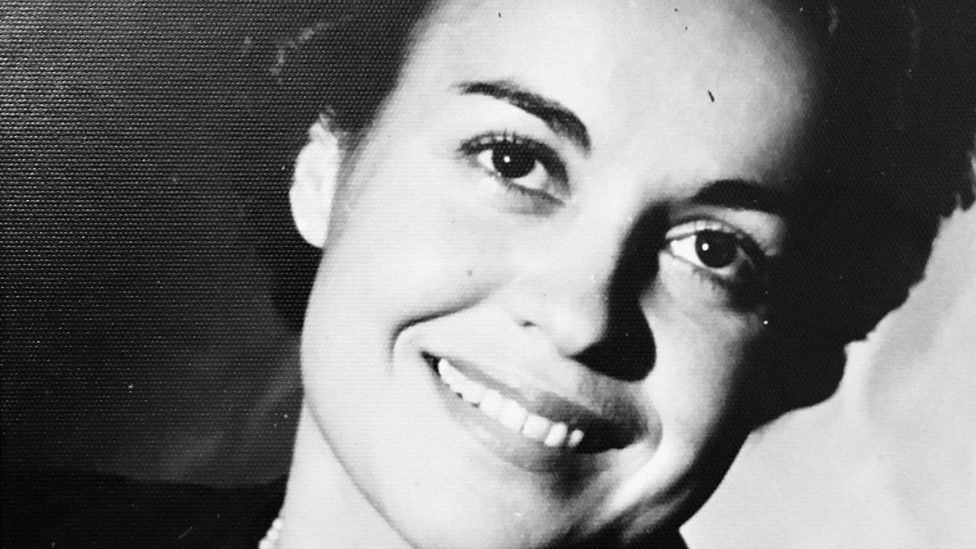

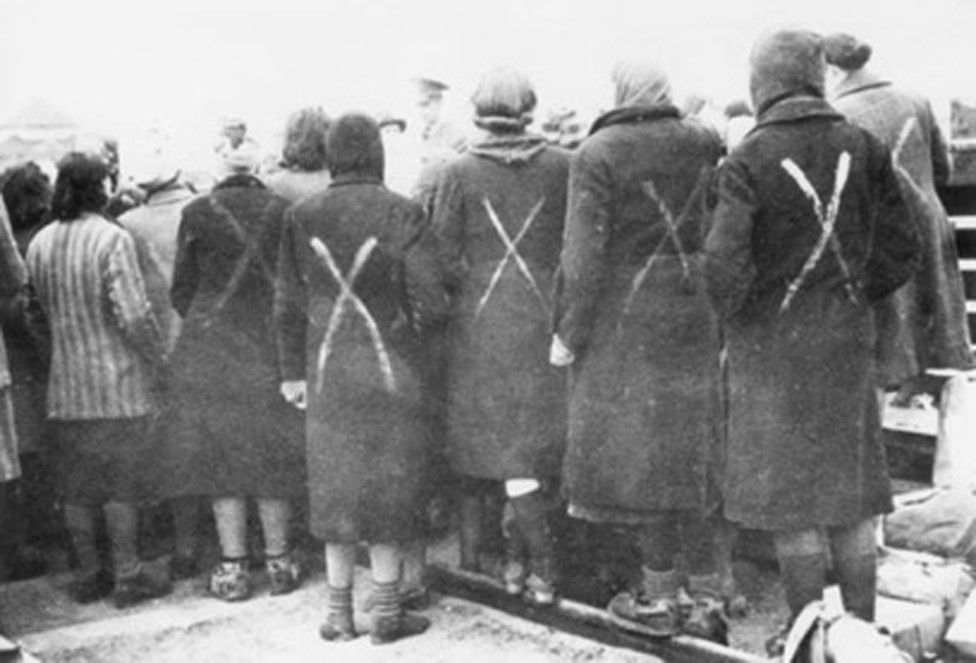



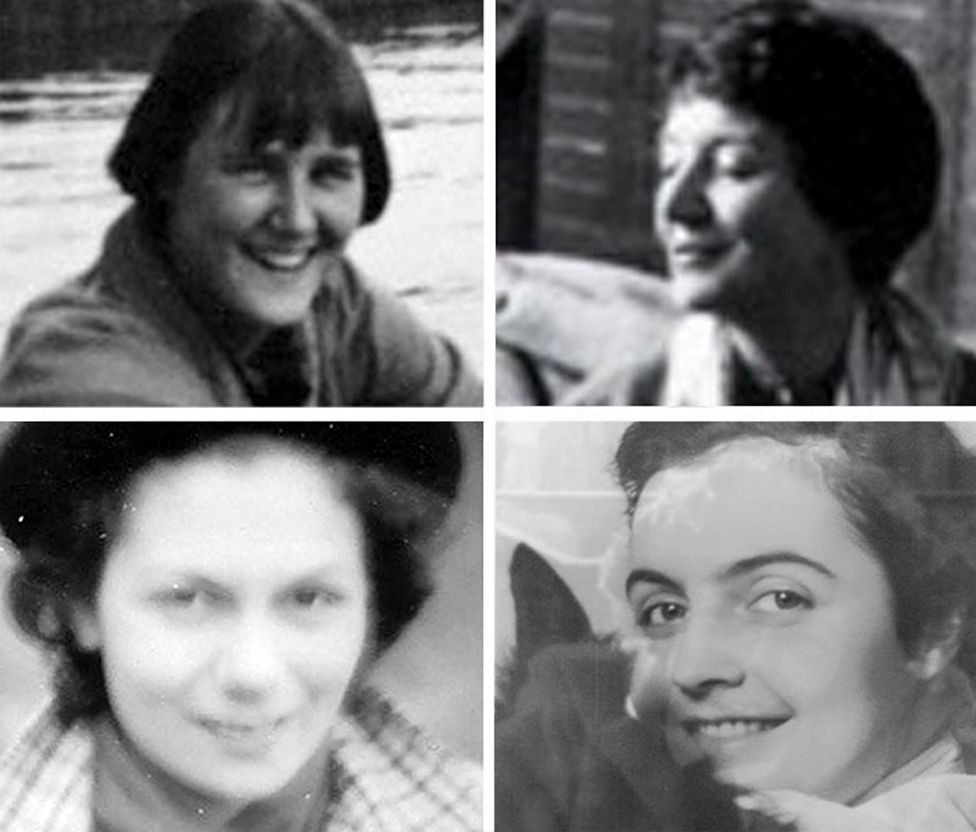
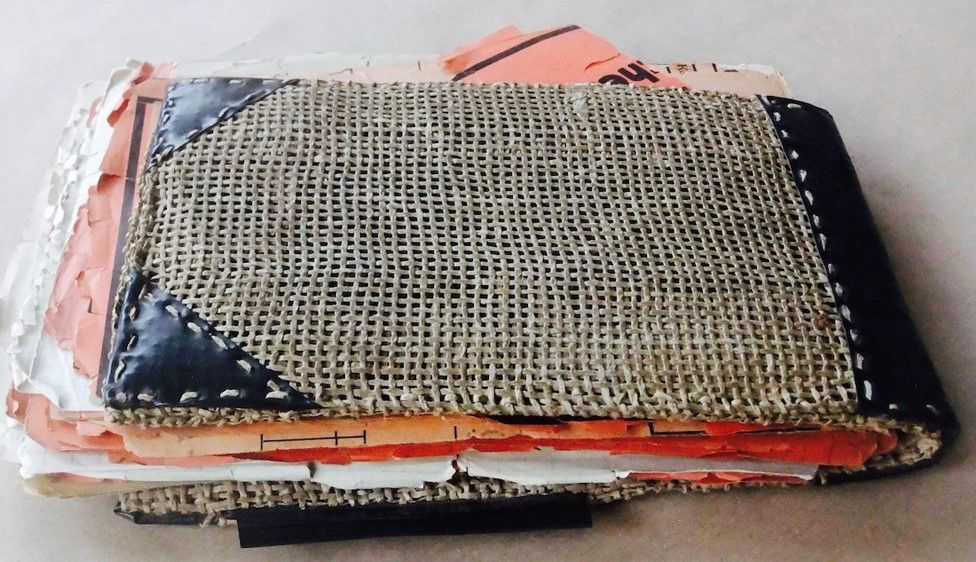
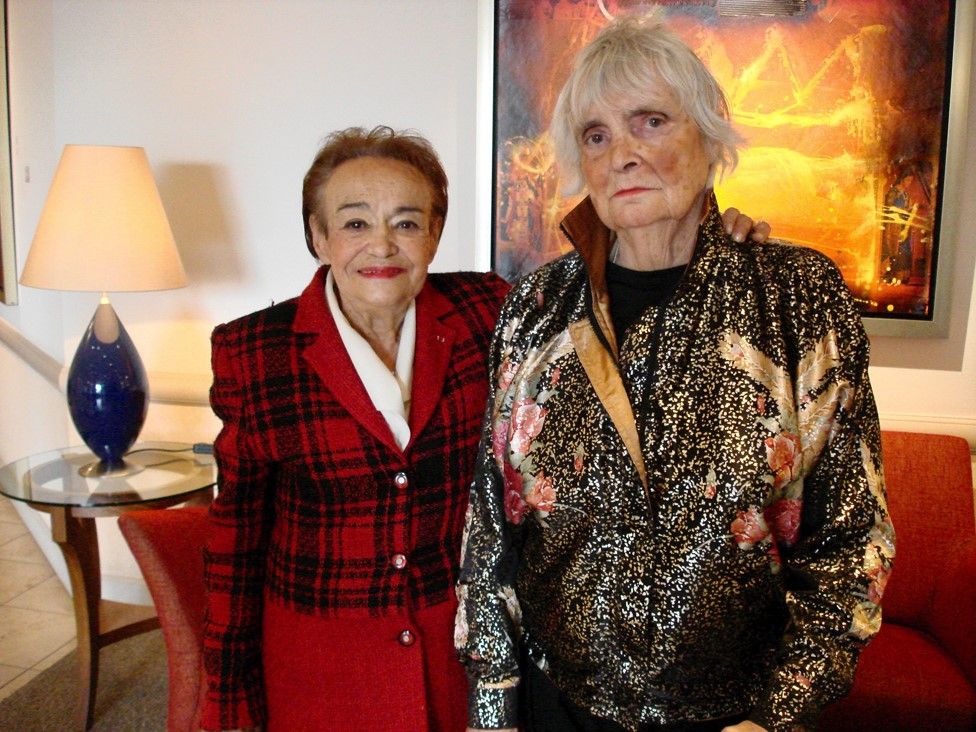
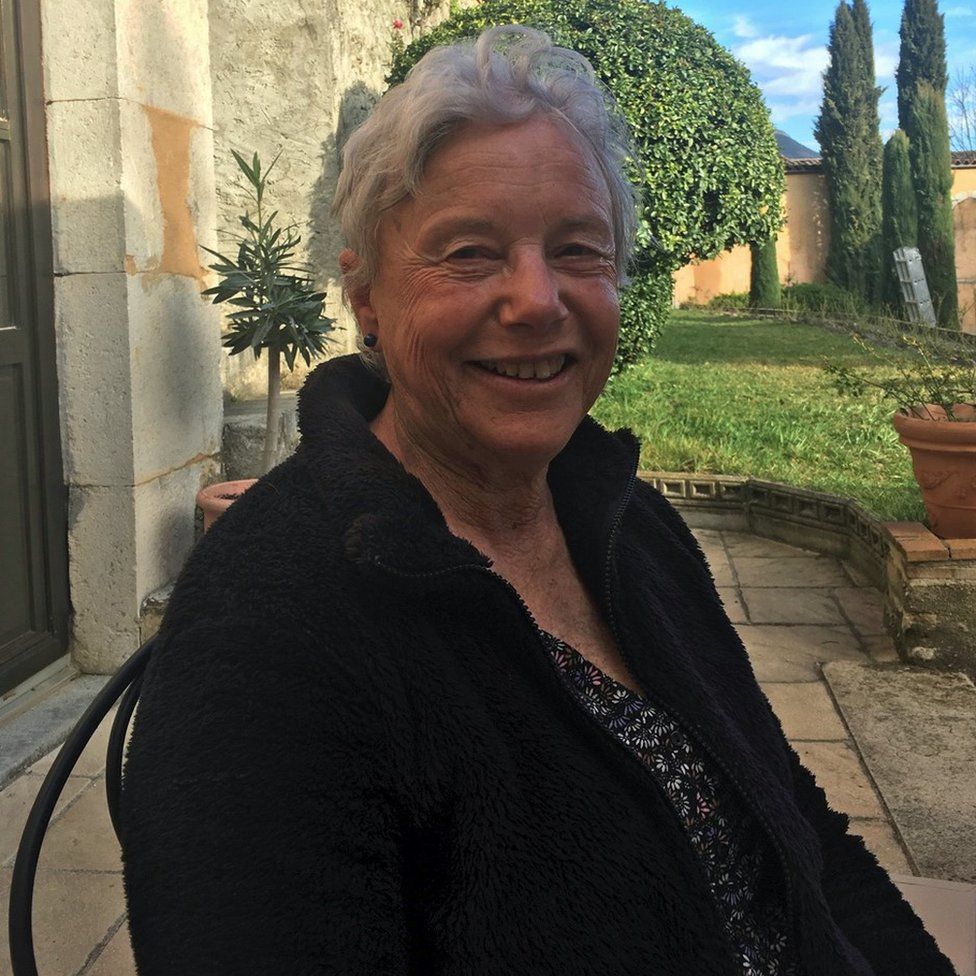

Comentarios
Publicar un comentario